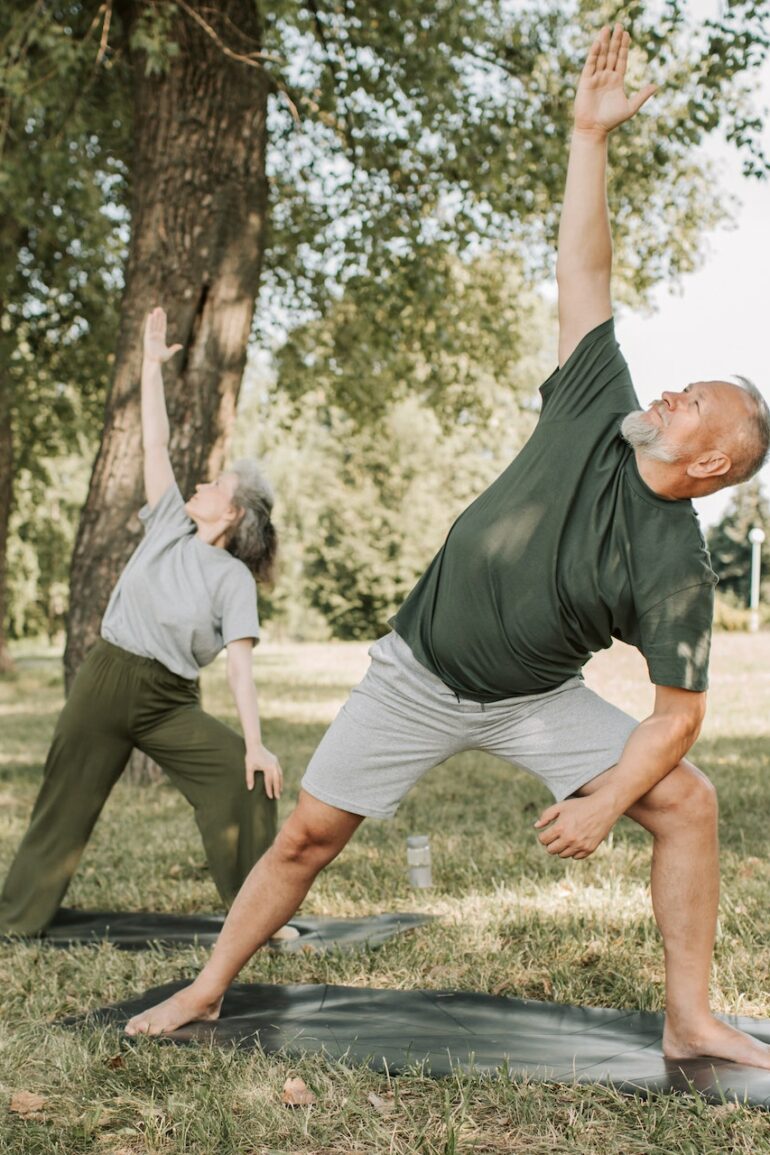Table of Contents
Have you ever listened to a truly talented singer and wished you could sing like that? Singing is a fun activity for many people, but not everyone can do it well. The good news is that there are several ways to teach yourself to sing without spending tons of money on a vocal coach. You may not be the next Whitney Houston, but you can improve your vocals so that they sound stronger and better. Discover nine techniques for teaching yourself to sing all on your own.
Warm Up
When you go to the gym, do you do a warm-up to get your blood moving? This is recommended because it can help prevent injury and make the workout easier. The same goes for singing. Before singing, you should do vocal warmups to stretch your vocal cords, which helps them make sounds more easily. There are a few ways to warm up your vocal cords.
Breathing Exercises
One way to warm up your vocal cords is to let all the air out of your lungs, relax, then take a deep breath. Each time you exhale, make an “sss” or “fff” sound to stretch your vocal cords.
Hum
Humming can help warm up the vocal cords. When humming, try alternating between high notes and low notes to activate different vocal cords.
Sing
Another way to warm up your vocal cords is to practice singing notes. Pick around five notes on the scale and practice singing them. Make sure you are singing each note clearly for an optimal warmup.
Decrease Nerves
When practicing singing, you may find yourself singing in front of others, which can be very nerve-wracking. Nerves can be the killer of your singing voice. It can cause shakiness, sweaty hands, and more. If your voice is shaky, try taking several deep breaths to calm your nerves. Breathe deeply, filling your lungs, and let the breath out slowly. Excessive sweating on the palms, also known as palmar hyperhidrosis, is a symptom of nervousness as well. It might not affect your singing voice, but it could make the microphone hard to hold, and it can be uncomfortable. If you’re experiencing extremely sweaty hands, you can learn more about the causes and cures here.
Be Aware of Posture
Many people are not aware but posture plays a huge role in one’s ability to sing. A proper singing posture is known as a tall posture. This posture keeps your body in alignment, which can improve your singing ability. In order to maintain a tall posture, you should stand with your feet shoulder-width apart, then make sure your shoulders, hips, and feet are in line. Lift your chest to a comfortable position and make sure your neck, chin, and back are straight.
Discover Your Vocal Range
A huge part of singing well is making sure you know your vocal range and can stay within that range. It is normal for one’s vocal range to vary one to two octaves. Your vocal range is the span of notes you are capable of reaching. In order to discover your vocal range, hum the lowest note possible for you and hold it for at least three seconds. Then raise your tone until you reach the highest note you’re capable of and hold it for three seconds. If you are unfamiliar with the different notes, you can download an app such as Vocal Coach to help determine your vocal range.
Improve Your Vocal Range
Though staying within your vocal range is the best way to sound your best while singing, it is possible to expand your vocal range with practice. Improving your vocal range can help you achieve higher notes without your voice cracking. The best way to do this is to start by singing your highest note, then going down by half octaves before going back up. Doing this can help you reach higher notes over time.
Increase Lung Capacity
Another way to improve your vocal range and improve your singing skills is to increase your lung capacity. Breathing exercises can help with breath support, which is a huge part of singing. When singing, you are supposed to breathe through your diaphragm rather than your chest and shoulders, as many people do regularly. Luckily, teaching yourself to breathe through the diaphragm is fairly easy.
How to take Diaphragmatic Breaths
It is best to stand in front of a mirror so you can see what you are doing. Turn to one side and place one hand on the bottom of your stomach. Take a breath so that your belly expands under your hand. Release the breath, making your stomach go back in. Do not move your shoulders or chest while breathing. The goal is to isolate all the movements associated with the breath to the stomach or diaphragm region. Once you have mastered this, practice it when taking breaths while you sing. It can help improve lung capacity, which in turn helps with vocal range and shakiness.
Learn to Stay on Pitch
This is perhaps the hardest part of teaching yourself how to sing. That’s because learning pitch usually requires a person to listen to you and give feedback. Luckily, there are apps like Vocal Pitch Monitor and OnPitch that you can use to help you learn how to stay on pitch and provide practice exercises without hiring an expensive vocal coach.
Stay Hydrated
This might sound silly, but water helps your body produce mucus, which is used to lubricate and loosen the vocal cords. If you are dehydrated, your vocal cords won’t be able to perform as well as if you are fully hydrated.
Practice Everyday
Practice. Practice. Practice. As with most things people want to get better at, practicing singing daily can help you improve and grow as a singer. Finding other singers to practice with, whether it be with friends or by joining a choir, singing with others can help you learn how to be a better singer. Another way to practice every day is to sing along to your favorite songs. Turn the song down so that you can really hear your own voice, and try to sing on key with the song. Record yourself and listen back to it to see if you can spot areas that need improvement. No matter how you choose to practice, find time to do it every day if you want to be the best singer you can be.
Learning to sing doesn’t have to be hard. Follow these easy steps to teach yourself to sing in no time at all!
Aging is associated with declining mobility and daily functioning
Coming out is a complex, personal process that happens
If you’ve had skin cancer and have recently undergone




